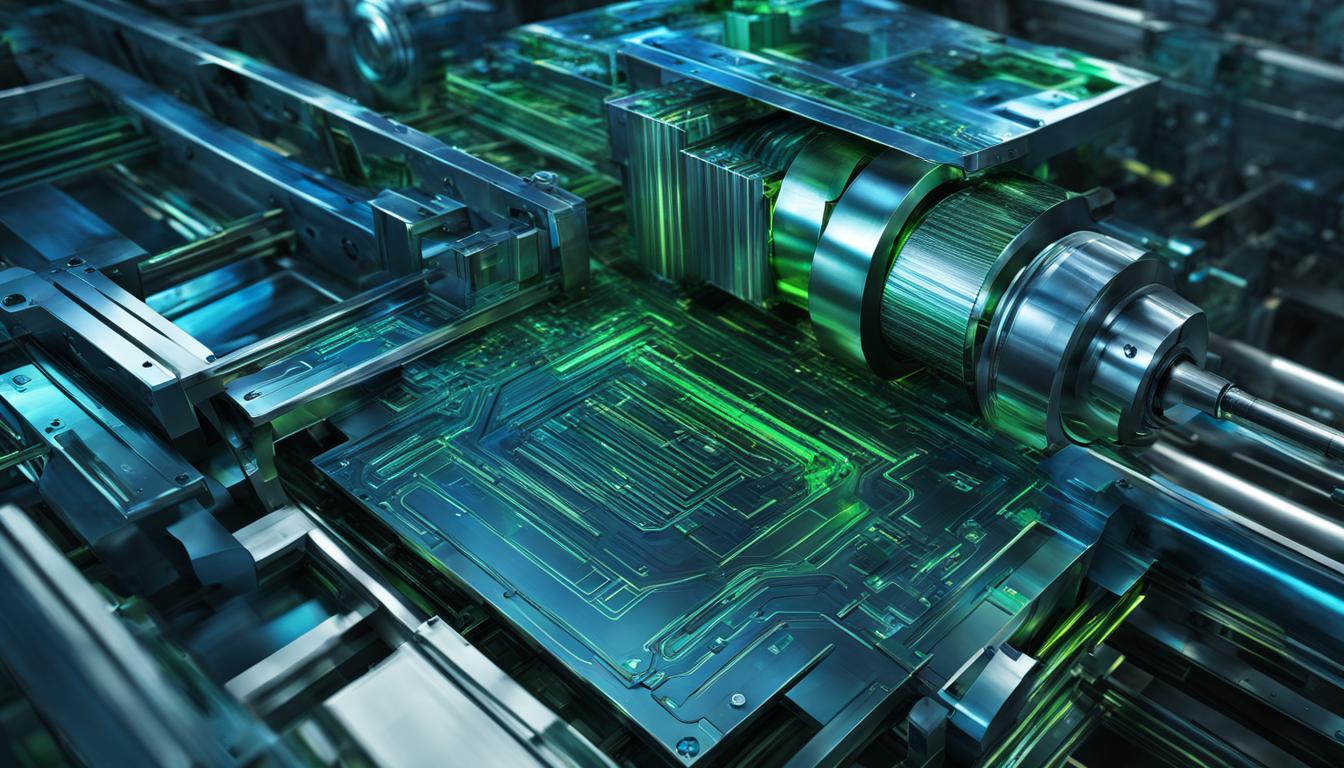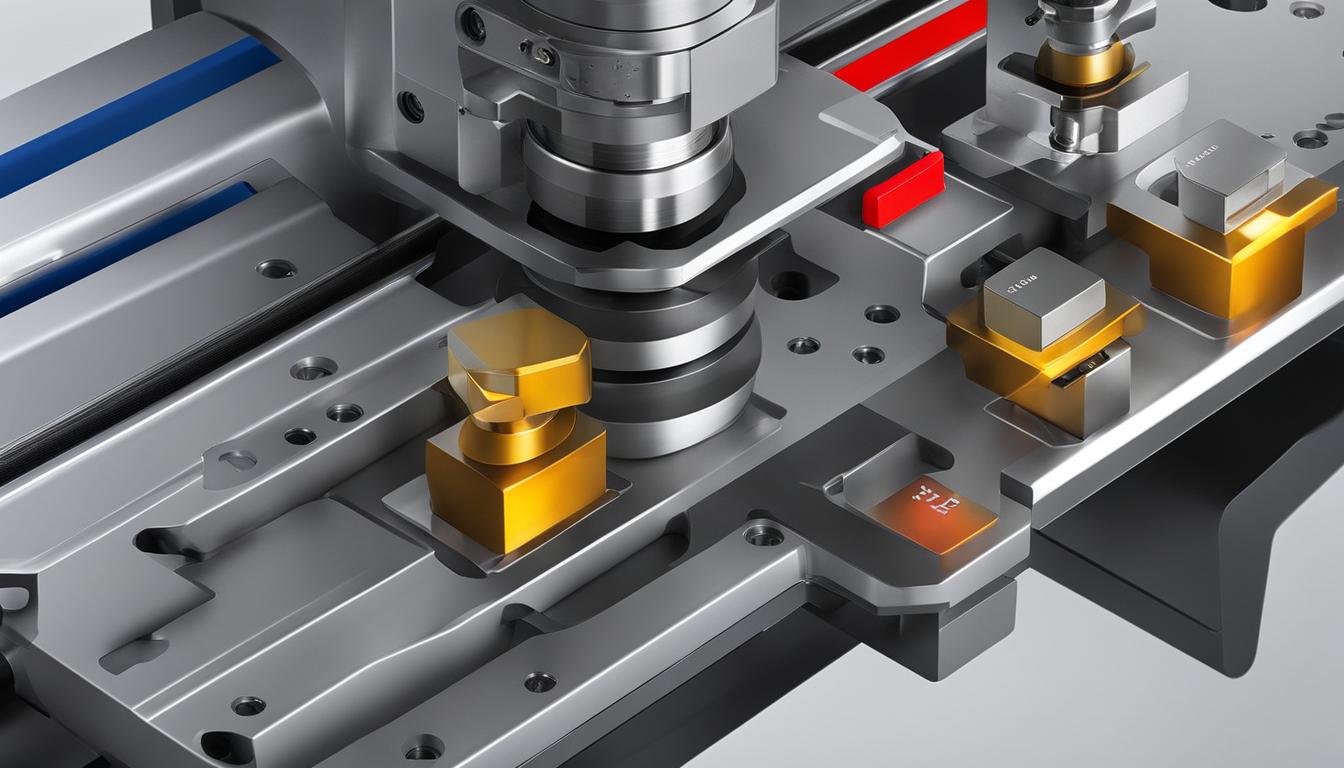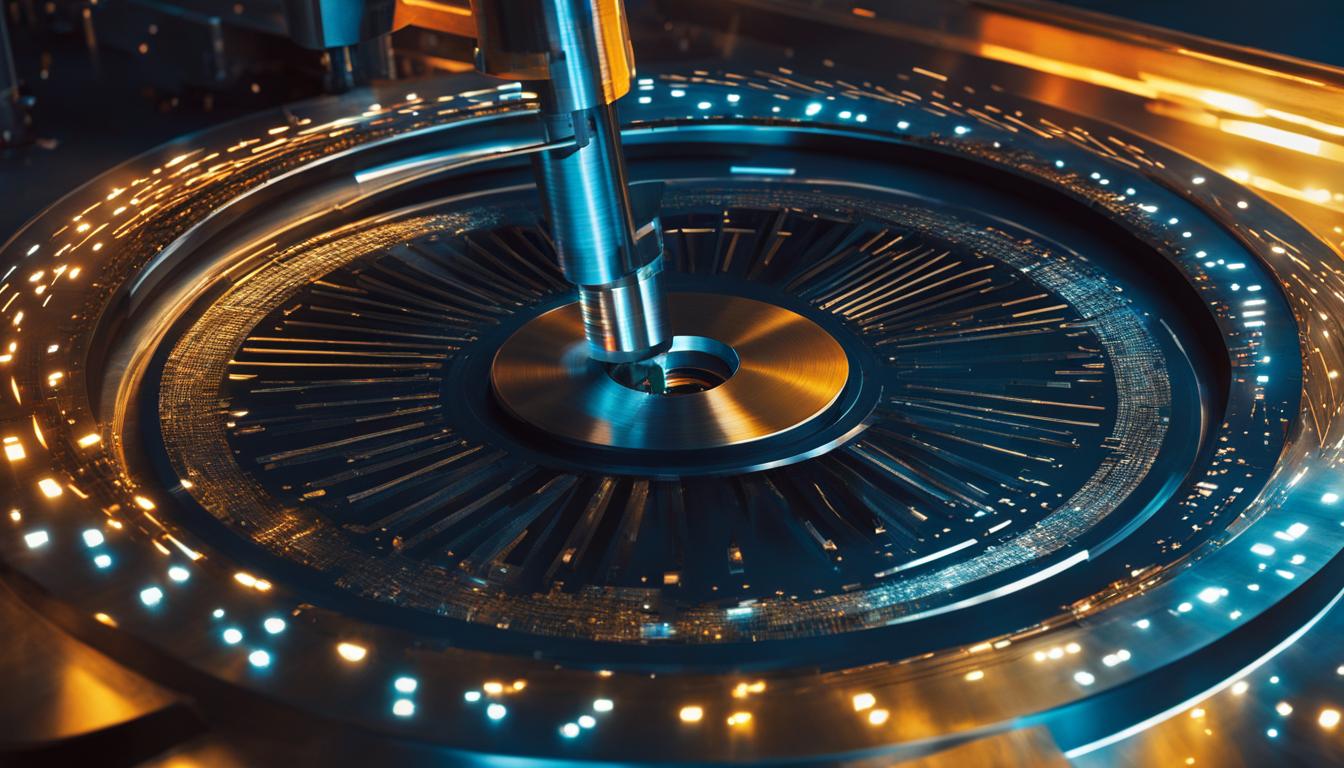CNC machines primarily use G-code as their programming language, which stands for “Geometric Code.” This standardized language consists of alphanumeric commands that control various aspects of the machine’s operation, including tool movement, spindle speed, and coolant flow. G-code is typically organized into blocks, with each block representing a specific machining operation. While G-code forms the core of CNC programming, M-code (Miscellaneous Code) is also used to control auxiliary functions such as tool changes and program stops.
Modern CNC systems often employ CAM (Computer-Aided Manufacturing) software to generate G-code automatically from 3D models, streamlining the programming process for complex parts. Some machines also support conversational programming, which allows operators to input commands using a more intuitive, menu-driven interface. Despite advancements in programming methods, understanding G-code remains crucial for CNC operators and programmers to troubleshoot, optimize, and fine-tune machining processes.
- CNC machines use a specific programming language known as G-code to control their operations.
- G-code encompasses various commands for motion control, tool changes, spindle speed, and more.
- Understanding G-code is essential for programming CNC machines accurately and ensuring precise manufacturing.
- G-code allows for automation, optimization of machining processes, and reduced risk of human error.
- With a thorough understanding of G-code, programmers can streamline production and troubleshoot issues effectively.
What is G-Code and its Function in CNC Machines?
G-code is the fundamental language used by CNC machines to execute precise manufacturing operations. It consists of a series of commands and parameters that control the actions of the machine. Essentially, G-code tells the CNC machine what to do and how to do it.
Within the G-code language, different letters serve as function codes to represent specific actions. Here are some commonly used function codes in G-code:
- G commands: Control machine motion such as linear interpolation, circular interpolation, and rapid moves.
- M commands: Execute miscellaneous machine actions like starting or stopping the spindle, coolant control, and tool changes.
- F commands: Determine the feed rate at which the machine moves along a programmed path.
- S commands: Set the spindle speed for machining operations.
- T commands: Specify the tool to be used for cutting or other operations.
G-code programs are organized into blocks, with each block representing a specific machining operation. These blocks consist of multiple lines, with each line containing a G-code command along with its corresponding parameters, if any.
Understanding and utilizing G-code is essential for effective CNC machine programming and operation. By writing and interpreting G-code instructions accurately, operators can ensure the machine performs the desired movements, executes tool changes correctly, and produces precise and high-quality parts.
The Importance of G-Code in CNC Machine Programming
G-code is the backbone of CNC machine programming, serving as the foundation for accurate and efficient machining operations. With G-code, programmers can precisely define tool paths, coordinate systems, feed rates, and other essential parameters, ensuring that the CNC machine follows instructions to produce high-quality parts.
There are several key reasons why G-code is of utmost importance in CNC machine programming:
- G-code enables precise control: By using G-code, programmers have precise control over the CNC machine’s movements and actions. They can define exactly how the machine should navigate the workpiece, ensuring accuracy and dimensional precision.
- Automation and productivity: G-code allows for the automation of machining processes, reducing the need for manual intervention. This automation leads to increased productivity and reduces the risk of human error, resulting in consistent and efficient production.
- Optimization and troubleshooting: With a strong understanding of G-code, programmers can optimize machining processes to achieve faster cycle times, reduce material waste, and improve overall efficiency. They can also troubleshoot issues by analyzing G-code programs and identifying potential errors or inefficiencies.
Overall, G-code plays a pivotal role in CNC machine programming, ensuring that the machine follows instructions accurately and produces high-quality parts. It provides precise control, enables automation, and allows for optimization and troubleshooting.

| Benefits of G-Code |
|---|
| Precise control over CNC machine movements |
| Automation and increased productivity |
| Optimization of machining processes |
| Troubleshooting and error identification |
G-Code Basics: Commonly Used Commands
When programming a CNC machine using G-code, there are several commonly used commands that serve as the building blocks for creating instructions. These commands dictate the machine’s motion, tool changes, spindle speed, and more. Mastering these G-code basics is essential for effective CNC machine programming and operation. Let’s explore some frequently used G-codes:
Movement Commands
These commands control the machine’s motion and positioning on the workpiece. They include:
- G00 – Rapid positioning – moves the machine rapidly to a specified coordinate
- G01 – Linear interpolation – moves the machine in a straight line to a given destination
- G02 or G03 – Circular interpolation – moves the machine in a clockwise or counterclockwise arc
Tool Control Commands
G-code also includes commands for tool-related operations, such as:
- G20 or G21 – Unit selection – specifies whether measurements are in inches or millimeters
- G40, G41, or G42 – Cutter compensation – determines the tool’s path and compensates for its size
- G43 or G49 – Tool length offset – adjusts the tool’s position to compensate for its length
Spindle and Speed Control Commands
Commands for controlling the machine’s spindle speed and feed rates include:
- G04 – Dwell – pauses the machine for a specified duration
- G94 or G95 – Feed rate mode – sets the feed rate to either units per minute or units per revolution
- G96 or G97 – Constant surface speed – maintains a constant cutting speed
Auxiliary Commands
G-code provides additional commands for various auxiliary functions, like:
- G17, G18, or G19 – Plane selection – specifies the work plane (XY, XZ, or YZ)
- G54 to G59 – Coordinate system selection – determines the origin and coordinate system
- G80 – Cancel canned cycle – stops the execution of a canned cycle
These commonly used G-code commands lay the foundation for CNC machine programming and open up a world of possibilities for creating intricate and precise designs. Whether you’re a beginner or an experienced CNC programmer, mastering these G-code basics is essential for achieving optimal results.
| G-Code Command | Description |
|---|---|
| G00 | Rapid positioning – moves the machine rapidly to a specified coordinate |
| G01 | Linear interpolation – moves the machine in a straight line to a given destination |
| G02 or G03 | Circular interpolation – moves the machine in a clockwise or counterclockwise arc |
| G20 or G21 | Unit selection – specifies whether measurements are in inches or millimeters |
| G40, G41, or G42 | Cutter compensation – determines the tool’s path and compensates for its size |
| G43 or G49 | Tool length offset – adjusts the tool’s position to compensate for its length |
| G04 | Dwell – pauses the machine for a specified duration |
| G94 or G95 | Feed rate mode – sets the feed rate to either units per minute or units per revolution |
| G96 or G97 | Constant surface speed – maintains a constant cutting speed |
| G17, G18, or G19 | Plane selection – specifies the work plane (XY, XZ, or YZ) |
| G54 to G59 | Coordinate system selection – determines the origin and coordinate system |
| G80 | Cancel canned cycle – stops the execution of a canned cycle |
Understanding M-Code in CNC Machine Programming
In addition to G-code, CNC machines also utilize M-code to control various machine operations. M-code commands are specifically designed for machine actions and functions, further enhancing the versatility and capabilities of CNC machines.
Here are some commonly used M-code commands and their respective functions:
- M03: Starts spindle rotation in the clockwise direction.
- M04: Starts spindle rotation in the counterclockwise direction.
- M05: Stops the spindle rotation.
- M06: Initiates a tool change.
- M08: Turns on the coolant system for cooling the tool and workpiece.
- M09: Turns off the coolant system.
- M30: Indicates the end of a program.
- M00: Enables program stops.
Understanding and effectively utilizing M-code commands is crucial for controlling CNC machines and ensuring safe and efficient operation. These commands allow operators to control spindle rotation, manage tool changes, activate coolant systems, and execute program stops.
With M-code programming knowledge, CNC machine operators can optimize machining processes, improve productivity, and achieve precise and accurate results.
Benefits of Understanding M-Code
Acquiring a deep understanding of M-code in CNC machine programming offers several advantages:
- Enhanced Control: M-code commands provide operators with precise control over specific machine operations, resulting in improved machining accuracy and efficiency.
- Safety and Efficiency: Using M-code correctly ensures safe machine operation by activating crucial functions such as spindle rotation, tool changes, and coolant systems.
- Optimized Workflow: Proficient use of M-code streamlines production processes by automating specific operations and reducing the risk of manual errors.
- Troubleshooting Capabilities: Comprehensive knowledge of M-code enables operators to troubleshoot issues, debug programs, and optimize machine performance.
By harnessing the power of M-code in CNC machine programming, operators can unlock the full potential of their machines, resulting in higher productivity, accuracy, and ultimately, business success.
Differences Between G-Code and M-Code
The main difference between G-code and M-code lies in their functions and purposes. G-code primarily deals with defining geometry and tool movement in relation to the workpiece. It includes commands for selecting coordinate systems, establishing work planes, setting units, and specifying tool movements.
On the other hand, M-code is focused on controlling machine operations and functions such as spindle control, coolant activation, tool changes, and program stops. While G-code commands determine how the tool moves in relation to the workpiece, M-code commands dictate what the machine does during the machining process.
| G-Code | M-Code |
|---|---|
| Defines geometry and tool movement | Controls machine operations and functions |
| Selects coordinate systems | Activates spindles and coolant |
| Establishes work planes | Initiates tool changes |
| Sets units | Stops programs |
| Specifies tool movements | N/A |
Comparisons Between G-Code and M-Code
- G-code focuses on defining geometry and tool movement, while M-code concentrates on controlling machine operations.
- G-code includes commands for selecting coordinate systems, establishing work planes, setting units, and specifying tool movements.
- M-code activates spindles, coolant, initiates tool changes, and stops programs.
- G-code determines how the tool moves in relation to the workpiece, while M-code dictates what the machine does during the machining process.
Other Auxiliary Functions in CNC Machine Programming
In addition to G-code and M-code, CNC machine programming incorporates various auxiliary functions that enhance control and customization options. These functions play a crucial role in achieving precise and efficient machining processes. Some of the key auxiliary functions in CNC machine programming are:
1. Positioning Point Coordinates (X, Y, Z)
The X, Y, and Z parameters determine the positioning of the machining tool relative to the workpiece. By specifying the coordinates, programmers can precisely control the tool’s movement and accurately execute machining operations.
2. Distance Between Start Point and Circle Center (I, J, K)
The I, J, and K parameters are utilized to define the start point of circular movements in CNC machine programming. They specify the distance between the start point and the center of the circle, facilitating the accurate generation of circular tool paths.
3. Interpolation Speed (F)
The F parameter controls the interpolation speed, representing the feed rate at which the machining tool moves along the programmed tool path. By adjusting the interpolation speed, programmers can optimize the machining process for efficiency and precision.
4. Spindle Speed (S)
The S parameter sets the rotational speed of the spindle, which directly influences the tool’s cutting speed. By adjusting the spindle speed, programmers can optimize the cutting conditions to achieve desired machining outcomes.
5. Tool Numbers (T)
The T parameter is used to specify the tool number to be used in machining operations. Each tool in a CNC machine has a unique number associated with it, allowing programmers to accurately select and control the tool’s usage during the machining process.
6. Tool Height Offset Numbers (H)
The H parameter defines the tool height offset, which compensates for variations in tool length. By using different H values, programmers can ensure precise machining depths and maintain consistent quality across different tools.
7. Tool Radius Offset Numbers (D)
The D parameter represents the tool radius offset, which compensates for variations in tool diameter. By applying different D values, programmers can achieve accurate tool paths and ensure optimal material removal during the machining process.
To provide a comprehensive overview of these auxiliary functions in CNC machine programming, refer to the table below:
| Auxiliary Function | Description |
|---|---|
| Positioning Point Coordinates (X, Y, Z) | Determines the tool’s positioning in relation to the workpiece |
| Distance Between Start Point and Circle Center (I, J, K) | Defines the start point and center of circular movements |
| Interpolation Speed (F) | Controls the speed at which the tool moves along the path |
| Spindle Speed (S) | Sets the rotational speed of the spindle |
| Tool Numbers (T) | Specifies the tool number for machining operations |
| Tool Height Offset Numbers (H) | Compensates for variations in tool length |
| Tool Radius Offset Numbers (D) | Compensates for variations in tool diameter |

These auxiliary functions provide programmers with greater control over the CNC machine’s operations, enabling them to achieve precise and efficient machining processes. By effectively utilizing these additional functions in G-code, programmers can optimize tool paths, improve productivity, and ensure consistent quality in manufacturing.
Programming Methods for CNC Machines
When it comes to programming CNC machines, there are several methods available to suit the complexity and requirements of the machining operations. Let’s explore some of the commonly used programming methods.
1. Manual Programming
Manual programming involves manually writing the G-code instructions based on knowledge and experience. This method requires a comprehensive understanding of CNC machine operations, tools, and programming techniques. Programmers carefully define each step, taking into account factors such as tool paths, feed rates, and spindle speeds. Manual programming provides maximum control and flexibility but requires a high level of expertise and attention to detail.
2. Programming in Operation
Programming in operation allows for interactive programming directly on the CNC machine using features provided by the machine’s control unit. This method simplifies the programming process by incorporating graphical user interfaces and automated tool path calculations. Programmers can make on-the-fly adjustments and visualize the tool paths in real-time. Programming in operation enhances efficiency and accuracy, especially for operators who are less experienced in manual programming.
3. CAD/CAM Programming
Another popular method is programming using Computer-Aided Design/Computer-Aided Manufacturing (CAD/CAM) systems. With CAD/CAM programming, CNC programs are generated based on 3D CAD models and automated CAM software. The CAD software creates a virtual model of the part, and the CAM software automatically generates the corresponding tool paths and G-code instructions. CAD/CAM systems offer advanced features such as simulation, collision detection, and optimization, making the programming process more efficient and error-free.
Here is a table summarizing the key features and benefits of each programming method:
| Programming Method | Key Features | Benefits |
|---|---|---|
| Manual Programming | – Requires expertise – Maximum control and flexibility |
– Precision in defining tool paths – Full customization |
| Programming in Operation | – Interactive programming – Graphical user interfaces |
– Real-time visualization – Simplified workflow |
| CAD/CAM Programming | – 3D CAD model integration – Automated CAM software |
– Time-saving automation – Advanced optimization capabilities |
Each programming method has its own advantages and is suitable for different scenarios. The choice of programming method depends on factors such as the complexity of the parts, the available expertise, and the desired level of automation. By leveraging the right programming method, manufacturers can optimize their CNC machine operations and achieve high-quality results consistently.
Evolution of CNC Machine Programming and Languages
Since the early days of CNC machines, programming methods have come a long way. In the 1950s, the APT programming language was introduced, marking a significant milestone in CNC machining. APT, which stands for Automatically Programmed Tool, allowed machine operators to input data about tool location and non-geometry machine functions. This language laid the foundation for CNC machine programming as we know it today.
During the same era, the RS-274 programming language, commonly known as G-code, emerged as a refinement of APT. G-code quickly became the standard programming language for CNC machines due to its concise and convenient instructions. With G-code, programmers can easily define the desired actions, such as tool movements, spindle speeds, and feed rates, utilizing a series of commands and parameters.
Today, CNC machine programming continues to evolve with advancements in technology. The integration of CAD/CAM systems has revolutionized the programming process, enabling CNC programs to be generated based on 3D CAD models. By utilizing automated CAM software, programmers can streamline and optimize their machining operations. Moreover, new programming techniques are being explored to further enhance the efficiency and precision of CNC machine programming.
